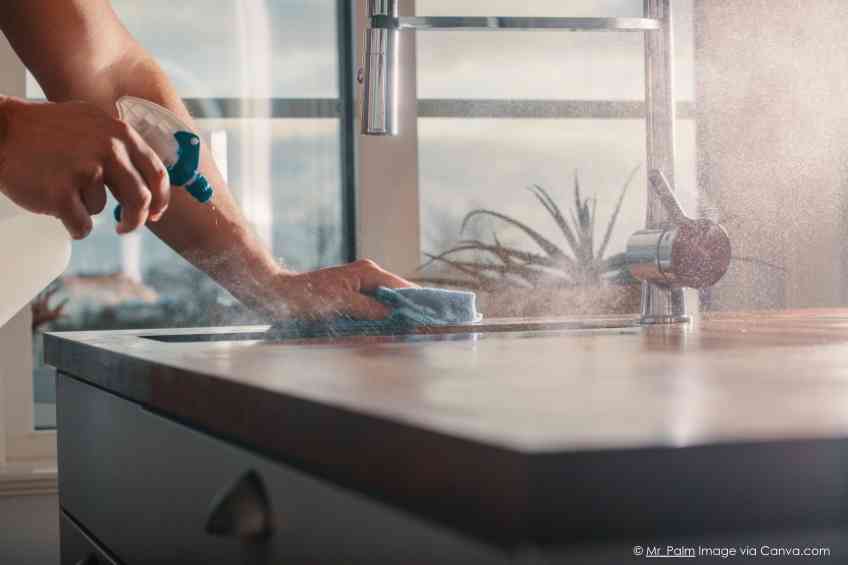By John Hand –
When the winter months hit, cold weather drives people inside where germs not only hide but thrive. It’s no secret then that cold weather months lead to a rise in colds, the flu and other infections. Sure, many work extra hard to keep their bodies healthy during this time. Unfortunately, they often overlook keeping their houses healthy as well. However, maintaining a clean and germ-free environment is just as important because healthy homes are happy homes. It’s not that hard.
The key to keeping a home healthy is understanding the difference between cleaning, sanitizing and desanitizing. Cleaning is simply wiping down surfaces with soap and water. Sanitizing is using a sanitizing spray or disinfectant to clean. Finally, desanitizing involves using bleach or a similar cleaning product to completely wipe out germs.
While it may not be important to perform a deep desanitizing daily, it is essential to realize that just cleaning surfaces does not mean homes are germ-free. In line with this, it is also important to target high-volume areas for deep cleaning. These typically include doorknobs, faucets and countertops.
The house focus has to expand if someone is sick. Deep cleaning means tracing where that person was resting, sitting or sleeping and eliminating germs that the individual may have left behind. This type of desanitizing is most effective with a cleaning schedule, which will ensure germ centers are eliminated on a regular basis.
One area that is always going to harbor germs in good weather or bad is the bathroom. It not only needs regular deep cleaning, but users can help stop the spread of germs and keep themselves healthier by washing their hands after every visit. Another highly used area is the kitchen. Killing germs here can’t just stop at countertops and faucets, sponges need to be switched out or disinfected often and handles for stoves, microwaves, toasters, coffee pots and refrigerators need to get a thorough and regular cleaning.
Another tip to keep a house healthy is to regularly wash bedsheets. Humans spend a lot of time in bed. All of that time in bed leads to sheets collecting skin oils, dirt, sweat and fecal matter. Washing sheets in hot water will eliminate any skin cell oils, dust mites and germs. In addition to bed sheets, regularly washing shower, gym and kitchen towels in warm water will greatly reduce germ transmission.
A largely unrealized tactic for keeping household germs at bay is to prevent them from ever coming in. This requires keeping a clean entryway. Shoes hold all manner of dirt, dust, salt, oil and other unsavory stuff. Simply removing shoes right after coming into a house will ensure all these unwanted items stay outside.
Keeping entryways well-lit is a good idea as well because dirty areas are more easily identified, which generally motivates homeowners to clean up and kill sitting germs.
Keeping germs at bay during winter months is also challenging because cold temperatures usually mean heating systems are running long and hard. This often results in dehumidification of a home, which helps germs spread.
A recent study, in fact, showed that keeping humidity levels between 40 percent and 60 percent can minimize the chances of viral virus transmissions. A humidifier in any room is an easy way to help and significantly reduce the risk of colds or flus.
Closed windows, which are natural in cold months, don’t help either. This leads to stagnant air inside, helping pollutants and germs to congregate. Consequently, it’s important to periodically throw up a window or skylight to let in some fresh air and improve the ventilation. This will help disperse contaminants that lead to infections, headaches and eye irritation.
There are lots of reasons to maintain a healthy house at any time of the year, but it’s critical during winter months, aka germ season.













